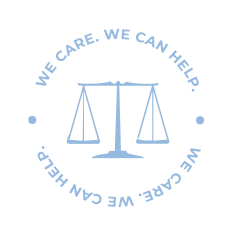Hurricane Michael has been downgraded to a tropical storm as it makes its way towards the Carolinas. However, even as the storm moves away from the Florida Panhandle, residents of the area are reeling from the strongest hurricane to ever hit this region of the Sunshine State.
Michael has left two dead in its wake after making landfall Wednesday around 2 p.m. Eastern Time. The hurricane slammed into the Florida coast near Mexico Beach as a Category 4 storm. Although the storm weakened to a tropical storm on Thursday, Oct. 11, it is still a considerably dangerous storm. Georgia and the Carolinas will face heavy rains, strong winds, and possible spinoff tornadoes as the storm moves across the Southeast out to the Atlantic Ocean.
As Michael moves north towards the still-recovering Carolinas, Florida residents are beginning to take inventory. It is expected that the greatest damage will occur near the eye of the storm. Further, it is estimated that the storm will be responsible for billions of dollars in damage. In fact, Accuweather predicts that the storm’s total damage and economic impact will be close to $30 billion.
This number is considerably lower than other storms because the speed at which Michael is moving will lessen inland flooding. Storms, like last month’s Hurricane Irene, stalled over the Carolinas—dumping several inches of rain and leading to severe flooding damage. This is not to say that Hurricane Michael will cause no flooding. Accuweather is, in fact, predicting that the greatest risk of flooding will occur in northern Florida and southern Georgia.
According to local news reports, hundreds of thousands of homes are without power in the Florida Panhandle.
The Extent of Damage From Hurricane Michael
With sustained winds at 155 mph—just 2 mph short of Category 5 status—Hurricane Michael will go down in history as the third strongest storm to hit the U.S. mainland. Prior to making landfall, experts estimated Michael’s potential damage to cost around $16 billion. However, as the storm continues to make its way north, damage estimates have nearly doubled to $30 billion.
Saturated grounds paired with strong winds uprooted trees, downed power lines, ripped the roofs off homes and decimated entire mobile home neighborhoods in the Florida Panhandle.
Hurricane Michael destroyed thousands of homes, businesses, and docks in the areas surrounding Mexico City as well. Reports have also emerged of one man and his family riding out the storm telling a friend that cracks began forming in his walls, water was rushing in and that the sliding glass doors were blowing and shattering. In addition, the impassable roads make it difficult for people to leave their homes.
The Carlson Law Firm Can Help
In the aftermath of a hurricane, homeowners and business owners must deal with insurance companies to begin the rebuilding process. It may be difficult to get your insurance company to pay you what you deserve, even if you’ve followed all the rules for your claims. Insurance companies will find reasons to deny or underpay your claim. Whether it’s a denial or reduction, it is important to know that a Flood Insurance Attorney can dispute a National Flood Insurance Program claim.
Federal courts handle flood claims. Because of this, it’s important to find an attorney with the experience to handle these types of claims, specifically.
Our team of experienced and dedicated FEMA and NFIP Flood Insurance Claims trial attorneys understands what it takes to get you the compensation you deserve.
Contact any of our offices for a free, no-obligation consultation today. A Carlson Law Firm Flood Insurance Lawyer will only get paid if you do.
Photo Courtesy Tessa Talarico/Instagram





